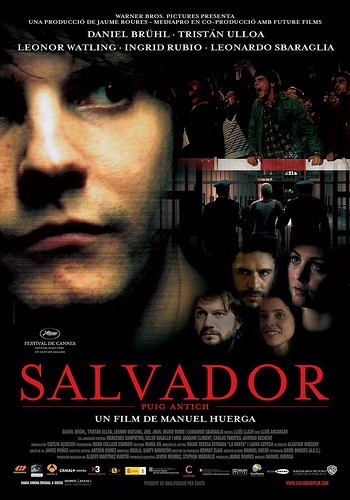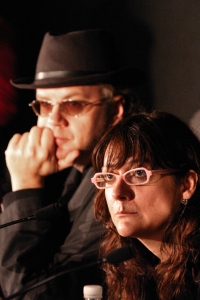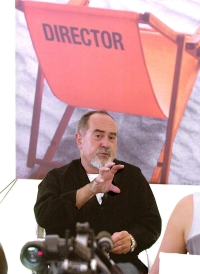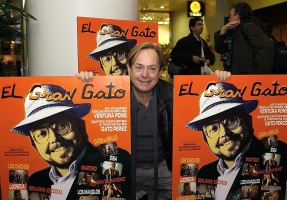

Film 
The pioneer of film in Catalonia, who has also passed into history as being the founder of Spanish film, was Fructuós Gelabert (1874-1955), film director, inventor and designer of the first film studios in Spain. In 1897 he made Spain’s first fiction film, Riña de café, and shortly afterwards he founded the Diorama company, going on later to found Films Barcelona, where he would adapt the works of Àngel Guimerà, Terra Baixa (1907) and Maria Rosa (1908).
In 1914 Barcelona was already the centre of the film industry in Spain, both in terms of production and distribution. Barcelona, with more than a hundred cinemas, was one of the cities in the world at that time boasting the most movie houses. The focus shifted to Madrid and Valencia after General Primo de Rivera’s coup d’état and the film industry in Catalonia, then bereft of resources, became fragmented. Nevertheless, there were ever more film-goers and in 1928 one of the first film clubs in Spain, EL Mirador, was established in Catalonia. That same year saw the publication of the Manifest avantguardista sobre el cine [Avant-garde Manifesto on Film], by the L’amic de les arts group, which included Salvador Dalí and Sebastià Gasch.
When the Second Republic was proclaimed the new government did not show much interest in the film which, between 1931 and 1936, became consolidated with a mass audience, especially for films made in the United States, which people liked most. In 1932 the first film studio to produce films with sound in Spain, called Orphea Films, was founded in Barcelona. With the opening of this studio Barcelona once again became the capital for film production. That same year the government of Catalonia, the Generalitat de Catalunya, set up a Film Committee, pertaining to the Catalan Ministry of Culture, to formulate film policy. In 1933 the first film spoken in Catalan was made: El cafè de la Marina by Domènec Pruna, based on the work by Àngel Guimerà.
During the Civil War the production company Laya Films came to the fore. It was dependent on the Generalitat de Catalunya Propaganda Commissariat, which produced the weekly newsreel Espanya al dia, of which there was a version in Spanish for the rest of Spain, as well as various documentaries in different languages which were sent abroad to help gain support for the Republican cause. The Communist Party based its production company Film Popular in Barcelona, and the CNT-FAI also produced their share of documentary film in Barcelona.
Most film directors went into exile after 1939 as a consequence of the Civil War while those who did not had to survive amidst the practical disappearance of film. The name that comes to mind as a director who was determined to continue with the film industry is Ignacio F. Iquino (1910-1994). In 1943 he founded the production company Emisora Films. It was a time when inconsequential, evasive films that were subjected to rigorous censorship were being produced. In spite of this situation, the first colour film to be made in Spain was shot in Barcelona in 1945. The cinemas and the few remaining production companies saw an upturn in their fortunes with the economic recovery for Franco’s dictatorship in the 1950s resulting from US aid. In 1952, Iquino achieved a considerable feat when he showed El Judas, the first film in Catalan during the dictatorship. It was banned the same day it was released.
A new generation of film makers worked on the run-of-the-mill productions that typified the period, and from them emerged some who were, aesthetically speaking, restless, such as Julio Coll (1919-1993) who, working within the genre of the thriller, made Distrito quinto in 1957, an adaptation of the novel by J. M. Espinàs És perillós fer-se esperar. For film with more of a social voice we can point to the works of Francesc Rovira Beleta (1913-1999).
Barcelona continued to be a place for production and distribution and by 1960 it had 154 cinemas. In spite of this, there was no sign of any Catalan cultural recovery, much less a linguistic one, with the Catalan language having been banned.
The 1960s were years of feeble recovery for film. In 1964, the actor Armand Moreno adapted and directed Maria Rosa by Àngel Guimerà, played by Núria Espert in Catalan. Literature continued to be the source of inspiration for film makers, amongst them Rovira Beleta, who based his Los Tarantos (1963), nominated for an Oscar, on Romeo and Juliet. The film he went on to make, El amor brujo (1967), also received an Oscar nomination.
One of the particular features of Catalan cultural life at the time was the Escola de Barcelona, or Barcelona School, a cooperative that brought different film makers together and that sought to break with the form and content prevalent in film being produced in rest of the peninsula. This movement sprang to life with Vicente Aranda’s (1926) Fata Morgana (1966). In collaboration with the poet Joan Brossa and the members of the artistic movement Dau al Set, Pere Portabella (1929) made, amongst others, Nocturno 29 (1968). The films that show the style of this school are Dante no es únicamente severo (1967) by Jacint Esteva (1936) and Joaquim Jordà (1935-2006); and Después del Diluvio (1968) by Jacint Esteva.
The last years of the dictatorship and the first years of the recovery of democracy enabled new figures to emerge, and subjects which had hitherto been banned to be raised in films. The Escola de Barcelona, still active, produced quality films by the standards of the day such as Liberxina 90 (1971), by Carles Duran, which raised the issue of censorship; Morbo (1972), by Gonzalo Suárez; and Iconokaut (1975) by José M. Nunes.
In 1976 two films with historical subject matter were released: La ciutat cremada, by Antoni Ribas (1975) about the Tragic Week, and Las largas vacaciones del 36 by Jaime Camino (1976) about the outbreak of the Civil War. Two years later Camino made La vieja memoria, a documentary based on the testimony of survivors of the Second Republic and the Civil War. In addition to the films being made based on historical subjects, the leap to freedom opened the door for a new generation of film makers to explore other subjects in their films. Examples of this are Francesc Bellmunt’s L’orgia (1978), Josep Joan Bigas Luna’s Bilbao (1976) and Ventura Pons’ Ocaña, retrato intermitente (1978).
As democracy took hold many of these film makers saw their careers standing on ground firmer and today some of them are still actively making films and have achieved international recognition. With regard to production and exhibition there was a sharp down-turn during the mid 1980s, and this led to a serious crisis in the industry, which lasted into the 1990s. New film makers emerged during this period such as Agustí Villaronga (1953) with Tras el cristal (1987), Manuel Huerga (1957) with Gaudí (1989), Antonio Chavarrías (1956) with Una ombra en el jardí (1989) and Isabel Coixet (1960) with Massa vell per a morir jove (1989). The 1990s produced Cesc Gay (1967), whose latest film, Ficció (2006), was premiered recently, and Marc Recha (1970), whose latest film is Dies d’Agost (2006). Amongst the latest film makers to emerge are Isaki Lacuesta (1975) with Cravan vs Cravan (2000) and Albert Serra whose first film, Honor de cavalleria (2006), was screened at the Cannes Film Festival.
As Catalan filmmaking entered the 21st century, Barcelona proved to be an active center of production. In 2004 a total of 106 films produced in Catalunya were shown at festivals around the world. Two important examples are: the documentary Balseros, by Carles Bosch and Josep M. Domènech, produced by Bausan Films and Televisió de Catalunya, and nominated for an Oscar; and Peter Greenaway’s Tulse Luper Suitcases, Part II, produced by ABS Productions, among others, which was screened as part of the Special section of the Berlinale 2004.
Highly regarded Catalan film scholars include Miquel Porter Moix (1930-2004), Joaquim Romaguera (1941-2006) and Román Gubern (1934).








